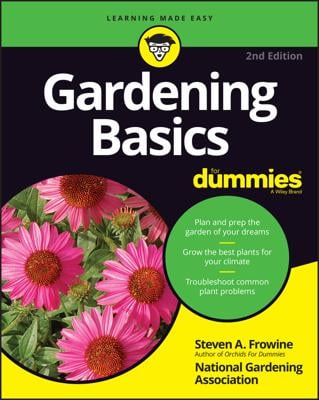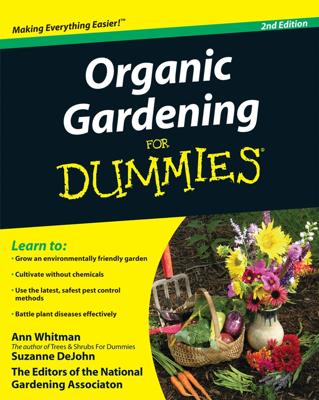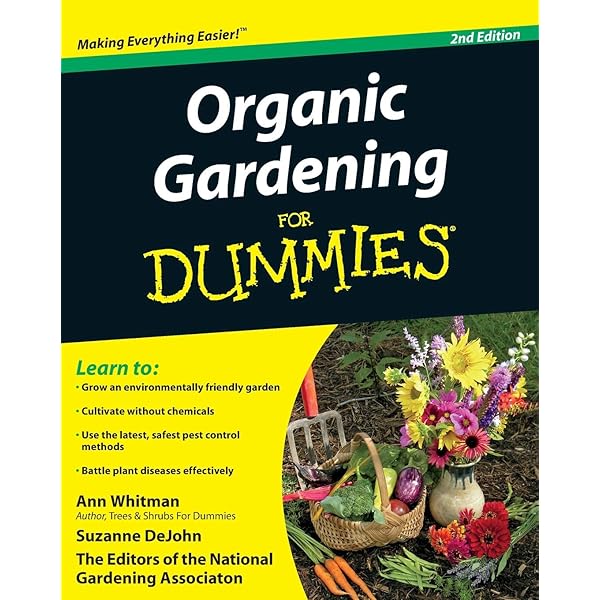To grow a garden for dummies, start by choosing the right location with good sunlight and soil drainage. Plan your garden layout and select easy-to-grow plants suitable for your climate and soil type.
Consider using raised beds or containers for small spaces. Make sure to water, fertilize, and weed your garden regularly to promote healthy growth. With proper care and attention, you can enjoy a bountiful and beautiful garden in no time. Are you new to gardening and looking to start your own garden?
Growing a garden can be a rewarding and enjoyable experience, even if you’re a beginner. With the right guidance and some basic knowledge, you can create a thriving garden that will bring you joy and satisfaction. In this guide, we’ll walk you through the essential steps to grow a garden, even if you’re a complete novice. Whether you have a spacious backyard or a small balcony, you can cultivate a green space that suits your needs and preferences. Let’s dive in and explore the world of gardening for dummies.
Getting Started: The Basics Of Gardening
Are you a beginner in the world of gardening? Don’t worry, we’ve got you covered! In this section, we will walk you through the essential steps to help you get started with growing your very own garden. From choosing the right spot to understanding soil types, we’ll provide you with all the information you need to kickstart your gardening journey.
Choosing The Right Spot
When it comes to gardening, location is key. The success of your garden depends on finding the perfect spot that receives adequate sunlight and has proper drainage. Here are a few factors to consider when choosing the right spot:
- Look for an area that receives at least 6 hours of direct sunlight each day. This will ensure that your plants get the energy they need to grow and thrive.
- Ensure the spot is easily accessible and convenient for you to maintain. Having your garden close to your house or a water source can make watering and tending to your plants much easier.
- Consider the size of your garden. If you have limited space, opt for container gardening or vertical gardening to make the most of what you have.
Understanding Soil Types
Now that you’ve chosen the right spot, it’s time to get acquainted with soil types. Different plants thrive in different types of soil, so understanding your soil composition is crucial for successful gardening. Here are the primary soil types you should be aware of:
| Soil Type | Description |
|---|---|
| Clay Soil | Heavy and dense soil that retains water. It can be challenging to work with but is nutrient-rich. |
| Sandy Soil | Light and loose soil that drains quickly. It requires frequent watering and additional amendments to hold nutrients. |
| Loamy Soil | Well-balanced soil that retains moisture while providing adequate drainage. It is considered the ideal soil type for most plants. |
Before you start planting, it’s recommended to test your soil to determine its pH level and nutrient content. This will help you make any necessary amendments to ensure optimal growing conditions for your plants.
With these basics in mind, you’re ready to embark on your gardening journey. Remember, gardening is a continuous learning process, so don’t be afraid to experiment and adapt as you go. Happy gardening!

Credit: www.dummies.com
Planning Your Garden Layout
Discovering how to grow a garden is simple with proper planning of your garden layout. Begin by choosing the right location, preparing the soil, and selecting the appropriate plants for your space. Take time to map out your garden design to maximize growth and enjoyment.
If you’re new to gardening, the thought of planning a garden layout can be overwhelming. But fear not, with a little bit of planning and preparation, you can create a garden that is both functional and beautiful. Here are a few tips to get you started.Sketching Your Design
Before you start planting, it’s important to sketch out your garden design. This will help you visualize how your garden will look and ensure that you have enough space for all of your plants. Start by measuring your garden space and then sketch out a rough design on paper. Be sure to include any existing features, such as trees, shrubs, or structures.Selecting Plants For Your Space
Once you have your garden layout sketched out, it’s time to start selecting plants. When choosing plants, consider your climate, soil type, and the amount of sunlight your garden receives. You’ll also want to think about the size and shape of your plants, as well as their growth habits. Make a list of the plants you want to include in your garden and then do a little research on each one to ensure that it’s a good fit for your space.Some factors to consider when selecting plants include:
- Climate
- Soil type
- Amount of sunlight
- Plant size and shape
- Growth habits
Some popular plants for beginners include:
| Plant | Light Requirements | Watering Needs | Growing Season |
| Tomatoes | Full sun | Regular watering | Spring/summer |
| Peppers | Full sun | Regular watering | Spring/summer |
| Lettuce | Partial shade | Regular watering | Spring/fall |
| Green beans | Full sun | Regular watering | Spring/summer |
Essential Gardening Tools
Gardening can be a rewarding and fulfilling hobby, especially for beginners. To get started, it’s essential to have the right tools at your disposal. The right equipment can make all the difference in creating a successful and thriving garden. In this section, we’ll explore the essential gardening tools that every beginner should have in their arsenal.
Basic Tools For Beginners
When getting started with gardening, it’s crucial to have a set of basic tools to help you tend to your plants and soil. These tools are essential for maintaining a healthy and flourishing garden:
- Garden Trowel: Ideal for planting and transplanting small plants and digging small holes.
- Hand Pruners: Essential for trimming and shaping plants to promote healthy growth.
- Garden Gloves: Protect your hands from thorns, sharp objects, and soil while working in the garden.
- Watering Can: A must-have for watering your plants without causing damage or over-saturation.
- Garden Hoe: Useful for breaking up soil, removing weeds, and creating furrows for planting.
Investing In Quality Equipment
While it’s important to have the basic tools, investing in quality gardening equipment can significantly improve your gardening experience. Quality tools are durable, ergonomic, and often provide better results. Consider adding the following quality equipment to your gardening toolkit:
- Long-Handled Shovel: Perfect for digging, planting, and moving large amounts of soil.
- Pruning Shears: Ideal for cutting thicker branches and stems with precision.
- Garden Rake: Essential for leveling soil, removing debris, and preparing the ground for planting.
- Soil Knife: Versatile tool for cutting through roots, dividing plants, and removing weeds.
- Wheelbarrow: Great for transporting heavy loads of soil, plants, and other garden materials.
Plant Selection: What To Grow
Choosing the right plants is crucial for a successful garden. Let’s explore some easy options for beginners.
Easy Vegetables For Beginners
Start with simple veggies like tomatoes, zucchini, and lettuce. These require minimal effort.
- Tomatoes
- Zucchini
- Lettuce
Flowers That Thrive With Minimal Care
Opt for low-maintenance flowers such as marigolds, petunias, and sunflowers.
- Marigolds
- Petunias
- Sunflowers
Sowing Seeds: A Step-by-step Guide
Gardening can seem like a daunting task, especially for beginners. However, with the right guidance, anyone can successfully grow a garden from scratch. In this step-by-step guide, we will walk you through the process of sowing seeds, from preparing the soil to knowing when and how to plant. Let’s get started!
Preparing The Soil
Before sowing seeds, it’s crucial to prepare the soil to provide a healthy environment for your plants to thrive. Start by removing any debris, such as rocks and weeds, from the area where you plan to sow the seeds. Then, loosen the soil using a garden fork or tiller to ensure good aeration and drainage. Incorporate organic matter like compost or aged manure to enrich the soil with essential nutrients. Lastly, level the soil surface with a rake to create a smooth planting bed.
When And How To Plant
Knowing the right time to sow seeds is crucial for their successful germination. Check the seed packets or consult gardening resources to determine the ideal planting time for each type of seed. Some seeds can be sown directly into the ground, while others may require starting indoors and later transplanting. Follow the instructions on the seed packet for proper planting depth and spacing. After planting, gently water the soil to ensure proper moisture for germination.

Credit: www.dummies.com
Watering Wisely
Watering your garden properly is essential to ensure the health and growth of your plants. Determining the water needs of your garden and implementing efficient watering techniques can make all the difference. In this section, we will explore how to water your garden wisely to maximize plant growth and minimize water wastage.
Determining Water Needs
Understanding the water requirements of your plants is crucial in order to provide them with the right amount of water. Here are a few factors to consider:
- Plant Type: Different plants have different water needs. Some plants, like succulents, require less water compared to others. Identify the type of plants you have and research their specific water requirements.
- Soil Type: The type of soil in your garden plays a significant role in determining water needs. Sandy soil drains quickly, requiring more frequent watering, while clay soil retains moisture for longer periods.
- Weather Conditions: Take into account the climate and current weather conditions. Hot and dry weather may necessitate more frequent watering, while rainy periods may require less watering.
Tips For Efficient Watering
Now that you have determined the water needs of your garden, it’s time to water efficiently. Follow these tips to ensure you are making the most of your watering efforts:
- Water Early in the Morning: Watering your garden early in the morning allows the plants to absorb the water before the heat of the day evaporates it. This also helps prevent fungal diseases, as the foliage has time to dry before nightfall.
- Avoid Overwatering: Overwatering can lead to root rot and other issues. To avoid this, water deeply but infrequently. This encourages the roots to grow deeper, making the plants more resilient to drought.
- Use Mulch: Applying a layer of mulch around your plants helps retain moisture in the soil, preventing evaporation and reducing the need for frequent watering.
- Water at the Base: Direct the water at the base of the plants, near the roots, rather than watering the leaves. This ensures that the water reaches the roots where it is needed the most.
- Consider Drip Irrigation: Drip irrigation systems deliver water directly to the roots, reducing water waste through evaporation and runoff. It also allows for precise control over the amount of water each plant receives.
By determining the water needs of your garden and implementing these efficient watering techniques, you can help your plants thrive while conserving water resources. Remember to regularly monitor the moisture levels in your soil and adjust your watering schedule accordingly. Happy gardening!
Fighting Pests And Diseases
Natural Pest Control Methods
- Use companion planting to repel pests naturally.
- Introduce beneficial insects like ladybugs and praying mantises.
- Apply neem oil or garlic spray as organic pest deterrents.
Identifying Common Plant Diseases
- Look for signs of powdery mildew, a common fungal disease.
- Check for yellowing leaves, which may indicate nutrient deficiencies.
- Inspect for black spots on leaves, a symptom of fungal infections.
Harvesting Your Bounty
Best Practices For Harvesting
Harvest fruits and vegetables at peak ripeness for the best flavor and nutrition.
- Use sharp shears or a knife to avoid damaging plants.
- Harvest in the morning for optimal freshness.
- Check for ripeness by color, size, and firmness.
Storing Your Garden’s Produce
Proper storage ensures your produce stays fresh longer.
- Store in a cool, dark place to prevent spoilage.
- Avoid washing fruits and vegetables until ready to use.
- Utilize airtight containers or bags to maintain freshness.
Expanding Your Garden
Incorporating New Plants
Choose colorful flowers to attract beneficial insects.
Consider adding herbs for culinary use and natural pest control.
Introduce perennials for long-term beauty and sustainability.
Rotating Crops For Soil Health
Rotate vegetables yearly to prevent nutrient depletion.
Plant cover crops like legumes to enrich soil naturally.
Embrace companion planting for a balanced garden ecosystem.

Credit: www.amazon.com
Frequently Asked Questions
How To Start A Garden For Beginners Step By Step?
To start a garden for beginners, follow these steps: 1. Choose a sunny location with well-drained soil. 2. Decide on the type of garden (vegetable, flower, or herb) and make a plan. 3. Prepare the soil by removing weeds and adding compost.
4. Select and plant seeds or young plants according to the instructions. 5. Water regularly and provide proper care to help your garden thrive.
How To Plant A Vegetable Garden For Dummies?
To plant a vegetable garden for dummies, choose a sunny spot, prepare the soil, and select easy-to-grow vegetables. Plant seeds or seedlings according to the instructions on the packet, and water regularly. Keep an eye out for pests and diseases, and harvest when ready.
Enjoy your fresh produce!
What Is The Easiest Thing To Grow In Your Garden?
The easiest thing to grow in your garden is lettuce. It requires minimal maintenance and grows quickly.
How Do You Prepare The Ground For A First Time Garden?
To prepare the ground for a first time garden, clear the area of weeds and debris. Test the soil’s pH and amend it as needed. Till the soil to loosen it and add organic matter. Create raised beds or rows for planting.
Ensure proper drainage and consider installing irrigation if necessary.
Conclusion
To sum it up, growing a garden might seem daunting at first, but it’s actually quite simple with the right tools and knowledge. By following the steps outlined in this post, even those with no prior experience can successfully grow a thriving garden.
Remember to choose the right location, soil, and plants for your garden, and to always water and care for them regularly. With patience and dedication, you’ll soon be enjoying the fruits (and vegetables) of your labor. Happy gardening!
